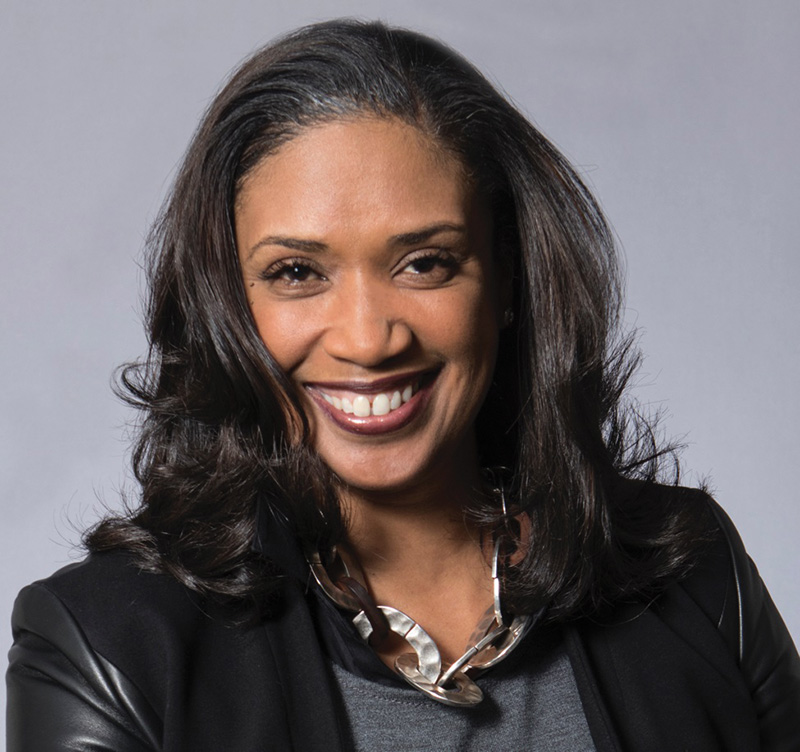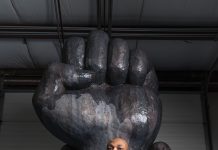Museums across the country and here in our own backyard are working to rebound in 2021 after in-person attendance т and budgets т withered last year. It will pose a tricky challenge for those at the helm. The six women profiled here are part of a national trend: More women than ever hold executive roles at museums, according to a survey released in 2018 by the Andrew W. Mellon Foundation. But diversity is stagnant. The number of people of color in similar positions grew from just 11 percent to 12 percent between 2015 and 2018, when data was most recently available. All the women profiled pointed to mentorship as a possible remedy.
For our annual Womenтs Issue, we asked these metro Detroit cultural leaders about their career paths, their upcoming challenges, and the women who inspired them along the way.
Robin Terryܧ
Chairwoman & CEO of the Motown Museum

Robin Terryтs connection to Motown runs through her bloodlines. Motown founder Berry Gordy is her great uncle; Esther Gordy Edwards, who founded the museum in 1985, is her grandmother. Terry is following in those footsteps and pursuing her own vision by leading an ambitious $50-million expansion of the landmark museum.Ь§
тIn my life т and certainly throughout the history of Motown т strong, independent women were present and visible in far greater numbers than average,т Terry says. тBeing around visionary women like my grandmother and the dozens of other women who profoundly influenced the legacy of Motown is a unique privilege, and Iтm so thankful to be able to tell their stories in a meaningful way at Motown Museum.тЬ§
That doesnтt mean the work to get more women into leadership roles within cultural institutions is done, she says. тOpportunity and access are critical components for women т especially women of color т and it is imperative that women have other women in positions of influence to reach for the next role and take on a new challenge to build experience and, ultimately, lead.т
A Woman Who Inspires Her: Vivian Pickard, president & CEO of the strategic consulting firm the Pickard Group. Formerly the president of the General Motors Foundation, Pickard was appointed to the Michigan Womenтs Commission in 2020 by Gov. Gretchen Whitmer. тThrough her personal and corporate philanthropy, Vivian invests in people and important cultural institutions throughout this country, particularly in Detroit,т says Terry. тShe is passionate about the arts and creating equal opportunity for women and people of color.т
Anne Parsonsܧ
President & CEO of the Detroit Symphony Orchestra

When COVID-19 put the crunch on in-person events, Anne Parsons and the DSO were well ahead of the competition with their digital assets. Under Parsonsт leadership, live streams became the norm. As one of the oldest orchestras in the country, housed in a facility that boasted at least 300 events a year, it was an impressive pivot that has kept the DSO in touch with its audience through the pandemic. Parsons has also continued and expanded the DSOтs decades-long legacy of reaching out to diverse audiences through classical music т an art form that still struggles to build a sustainable pipeline for long-neglected minority audiences. Looking ahead to the rest of 2021, Parsons says there is тgreat hope for being able to come together again, connect, and heal through shared experiences.т One of the biggest management changes she says sheтs seen over the years is a wider acceptance of a life/work balance as being a general problem, not just a тwomanтs issue.т тThis had been a serious barrier for women aspiring to CEO positions,т Parsons says. тMore and more, Iтm happy to see that it has become a shared value for men and women alike.т
A Woman Who Inspires Her: Chacona Baugh, director emeritus at the DSO and an early supporter of the Classical Roots Celebration, which aims to increase awareness of the contributions of the DSOтs African-American composers and musicians. тI was always struck by her grace, intelligence, compassion, curiosity, and love for life,т says Parsons, тwhile at the same time admiring her capacity to take on huge tasks, working hard to accomplish goals, create progress and enable positive change.т
Diana Aboualiܧ
Director of the Arab American National Museum

Thereтs nothing typical about Diana Aboualiтs journey to becoming director at the Arab American National Museum in Dearborn. Her Ph.D. in history and Middle Eastern studies from Harvard took her on the teaching route to Dartmouth College before she sought professional fulfillmentЬ§ elsewhere. Her role as head of research and collections at the Palestinian Museum in Birzeit in the West Bank taught her тhow to present history when youтre in a classroomт and, she says, how museums work.
тThe museum field in the U.S. remains largely white, and the face of museum leadership is mostly white and male,т she says. тA lot more work needs to be done to make the museum profession more diverse and inclusive.т After a challenging 2020, Abouali is focused on building back her staff and focusing on the museumтs core mission by resisting trends that emerged during the pandemic. тI think the challenge will be to not fetishize the digital turn in a way that distracts from the real work that we need to do т producing new knowledge about Arab Americans that is interesting, engaging, relevant, and meaningful to our audiences.тЬ§
A Woman Who Inspires Her: Ladan Akbarnia, curator of South Asian and Islamic Art at the San Diego Museum of Art. тShe is at once brilliant, humble, generous, and incredibly productive т a leading scholar in her field, and the creator of world-class exhibits,т Abouali says. тShe makes it a priority to mentor her younger female colleagues, which is something I admire a lot in her.т
Laura A. Hughesܧ
Interim executive director at the Museum of Contemporary Art Detroitܧ

The former director of the Ruth Ellis Center, a homeless and runaway shelter for LGBTQ+ youth in Highland Park, Laura A. Hughes says an introduction to vogueing т a dance form that emerged out of Harlemтs Black queer community in the late 1970s т helped her understand the power of self-expression through arts, culture, and resilience. тI learned what it means to be an ally, to know that sometimes your voice can open a door, but it isnтt your voice that should be the lead,т Hughes says.Ь§
In her new interim leadership role at MOCAD, sheтll steer a marquee contemporary art institution that fired its longtime executive director last summer after former employees orchestrated a public campaign to address a toxic workplace culture. тI have watched from a board seat as young, amazingly talented female curators have been devalued, plugged in without autonomy or the investments in their work that would enable them to thrive,т says Hughes, who served on MOCADтs board for two years before taking on her current role. тThe cultural sector should understand and be a beacon for the complexity of voice and experience. Iтm delighted that 2020 brought a reckoning with racial justice and that the courageous voices of Detroit activists, artists, and makers are demanding more from our institutions. It is beyond time that we respond.т
A Woman Who Inspires Her: Tonya Allen, the former president and CEO of Detroitтs Skillman Foundation, a philanthropy organization dedicated to creating opportunities for children in Detroit. тShe operates at the intersection of neighborhoods, the corporate sector, and private industry, and no matter what room sheтs in, always reminds us to ask, тHow are the children?т т says Hughes. тIf cultural institutions held ourselves to these same standards т if what we exhibit and program always asked, тHow is Detroit?т т what would we look like?т
Patricia E. Mooradianܧ
President & CEO of The Henry Ford

Patricia E. Mooradian says the jump from the for-profit world to the nonprofit Henry Ford was a decision that тliterally changed my life.т It changed the museum forever, too. Mooradianтs vision has reshaped The Henry Ford into one of the most original cultural attractions in the country. During the pandemic, online visitation from outside of Michigan rose by 26 percent over the previous year. Its ambitious Invention Convention Worldwide has connected with more than 120,000 K-12 student inventors as part of a larger push to support тinnovation, invention, and entrepreneurship regardless of backgrounds and barriers,т says Mooradian. But re-establishing pre-pandemic in-person attendance numbers is critical for the success of the museum, which saw layoffs last year due to the attendance decline. Transparency and diversity in hiring will be key, too. тWhile nearly half of museum directors across the country are women, I truly believe there is so much more to be done in terms of diversity and equity for all,т Mooradian says. тWe need to continue to make progress in creating opportunities that attract diverse talent at all levels of an organization.т
A Woman Who Inspires Her: Mariam Noland, president of the Community Foundation for Southeastern Michigan. тThe strategy and growth sheтs accomplished during her career and the role sheтs played in supporting the entire community deserves recognition.т
Elana Rughܧ
President & CEO of the Detroit Historical Society

Elana Rugh emerged from a career in the nonprofit realm to take over the Detroit Historical Society in 2018, which includes the Detroit Historical Museum and the Dossin Great Lakes Museum on Belle Isle. It was a new challenge for Rugh, who had never operated a museum before but adored them as a patron. This year, Rugh will guide the museum through its centennial as only the second woman to lead the cultural institution. тGender and ethnic equity is an issue throughout the museum community globally, as is the gender pay gap,т Rugh says. тBut there is a growing number of female leaders and leaders of color in Detroitтs cultural sector, and I am proud to be part of such a diverse and talented group.т Looking ahead, Rugh foresees a need for more financial support to cover basic operating costs, as well as difficulties in monetizing digital experiences that have become a necessity for the entire cultural sector. тAs we come out of the fog of these COVID times, times of great stress and political divide and racial unrest, we have a responsibility here at the Historical Society to ensure that we have collected the stories about this time,т she says, тand that we work to create Detroitтs museum for the next 100 years.т
A Woman Who Inspires Her: Anne Parsons, president & CEO of the Detroit Symphony Orchestra. Rugh says she was the only leader of any Detroit cultural institution to welcome her when she first got the job. тI have particularly appreciated our candid conversations about leading through crisis т and about being a successful leader while also being a mom,т Rugh says. The friendship has led to collaborations between their institutions, and Rugh now sits on the DSOтs Board of Trustees. тAnne represents many of the best traits I aspire to have as I evolve as the leader of the Historical Society.тЬ§
|
| Ь§ |
|








